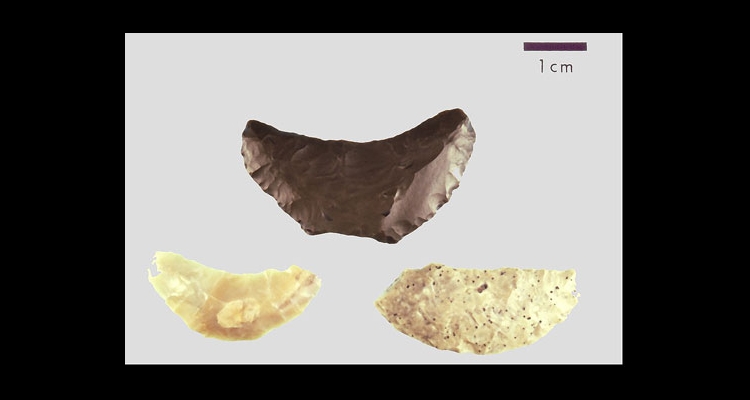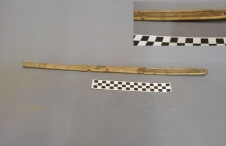Crescents
Distinctive, prehistoric stone crescent tools are found from Washington state to Southern California and from the Coast Range to Southern Arizona. By far, however, they are most commonly found in the Great Basin, where they are usually associated with playas. The function of these crescent-shaped, chipped stone artifacts has eluded archaeologists for several generations. There is a range of shapes and sizes, but they are part of a continuum and may be a single functional type. Great Basin crescents are distinguishable from other crescent-shaped artifacts (e.g. Stockton Curves) because they exhibit a central "body" area formed by edge-grinding or steep angled flaking, and two symmetrical, lateral "wings" with relatively sharp edges.
Crescents are poorly dated but appear to date back to the early Holocene period, and they are frequently found in association with various early Holocene stemmed points and basally thinned concave base points. The best dated specimen is from below Mt. Mazama ash (ca. 7000 B.P.) at the Lind Coulee Site in Washington. They are also known from a number of early Holocene sites, including the following localities: Long Valley, Nevada (including Sunshine Well Locality); Railroad Valley, Nevada; Black Rock Desert, Nevada; Borax Lake Site, California; Lake Mohave, California; San Miguel Island, California; Danger Cave, Utah; and Wilcox Playa, Arizona.
Initially described as "ancient implements of surgery," crescents have been variously described as scrapers, transverse points, sickle blades, ornaments and side blades on throwing sticks. Use wear analysis, including electron microscopy, has not provided any conclusive evidence of their function. Although there is no agreement on the initial function of these tools, as is common with Early Archaic stemmed points, crescents are sometimes reworked to create other implements, such as engraving and cutting tools (gravers, burins) and drill tips.
Article Locations
Related Articles
Further Reading
None at this time.

